Scott #115 is part of the 1869 Pictorial Issue, a groundbreaking series in U.S. postal history that introduced designs depicting events and symbols rather than exclusively portraits of statesmen.
While other values in the set showcased locomotives, allegories, and historic scenes, the 6-cent denomination returned to a traditional portrait of George Washington, underscoring his enduring symbolic role in American identity. This issue was intended for postal rates requiring higher franking than the standard 3-cent domestic letter postage, making it an important value for both foreign mail and certain specialized domestic uses.
Its production reflected the Post Office Department’s efforts to balance new experimental themes with continuity, ensuring that Washington remained central to U.S. philatelic imagery.
Design & Print
Scott #115 was produced in 1869 by the National Bank Note Company under contract with the federal government. The stamp was printed in ultramarine on hard wove paper and impressed with the “G” grill, a rectangular grid of small pyramids pressed into the paper to prevent the reuse of stamps by allowing ink from cancellations to penetrate more deeply into the fibers.
The design is vertical in format, featuring an engraved bust of George Washington facing right, enclosed within a decorated frame. The words “United States Postage” appear at the top, while “Six Cents” is clearly spelled out at the bottom. Around 6 million stamps were printed, significantly fewer than the more heavily used 3-cent denomination, but appropriate for the more limited uses of this value.
The engraving was executed with fine attention to detail, particularly in the rendering of Washington’s facial features and the surrounding ornamental scrollwork.
Postal Usage
The 6-cent Washington fulfilled specific needs within the U.S. postal system of 1869. One of its primary functions was to pay the single-rate postage for letters sent to Great Britain under the postal treaty then in effect, which fixed the cost at 6 cents per half ounce.
Domestically, it could be used on heavier letters or parcels, as well as in combination with other denominations to create exact franking for complex rates. Its issue corresponded with the ongoing expansion of U.S. international mail services and reflected the importance of aligning American postal practices with international treaties and Universal Postal Union standards that would come into play later in the century.
This denomination provided efficiency for both personal and commercial correspondence requiring higher-value postage.
Identification
Scott #115 can be identified by its ultramarine coloration, vertical format, and portrait of George Washington facing right. It is perforated 12, in line with the rest of the 1869 Pictorial Issue. The “G” grill is one of the most critical diagnostic features, measuring about 12 by 11 points. It appears as a grid of small squares pressed into the stamp, visible under magnification or when held to angled light.
The engraving shows sharp detail in Washington’s bust and the surrounding frame, which specialists use to confirm genuine examples. Taken together, the ultramarine ink, grill impression, and engraving style make Scott #115 a readily identifiable member of the historically significant 1869 Pictorial Issue.

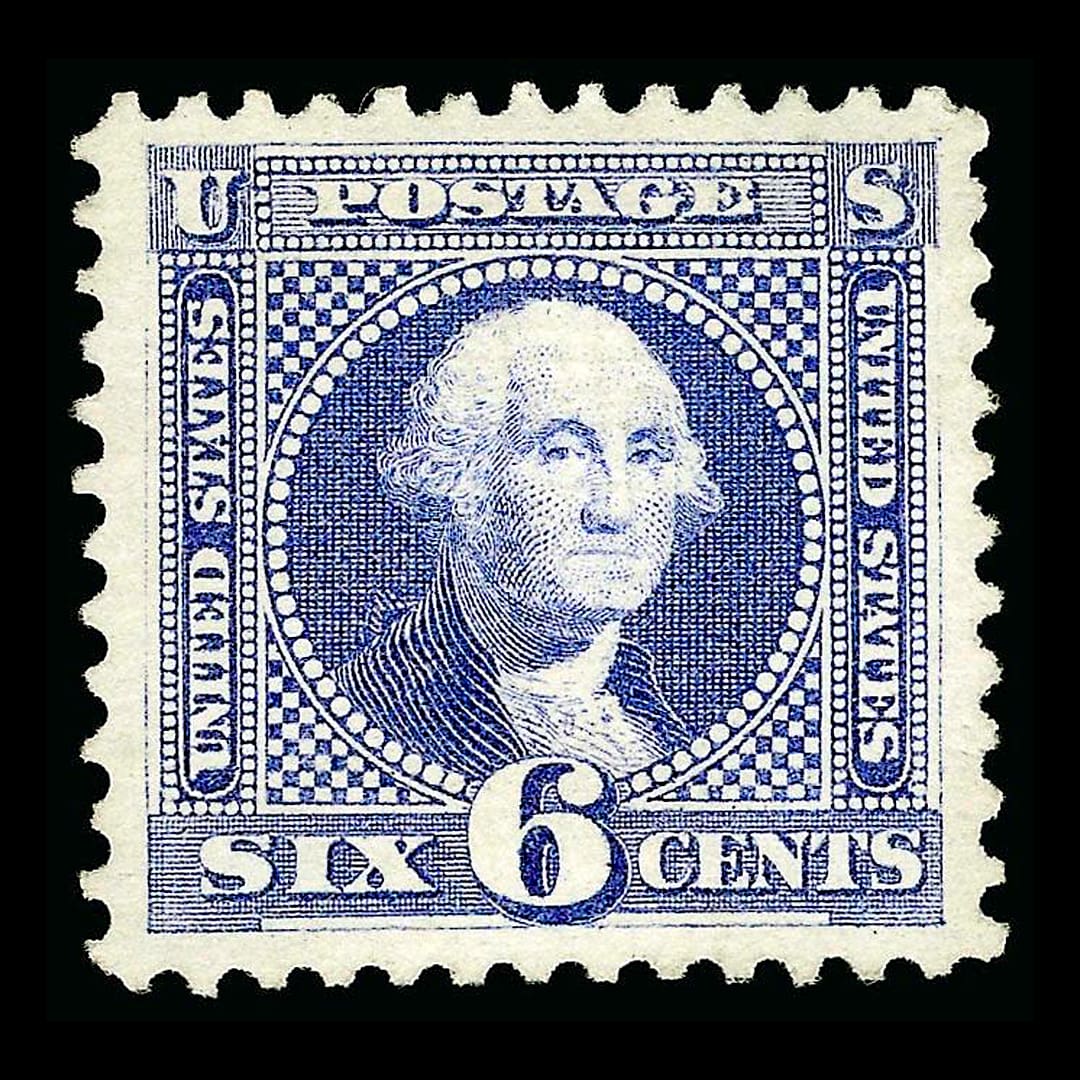

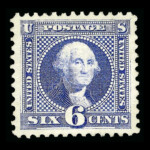
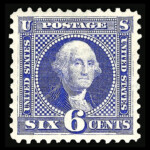
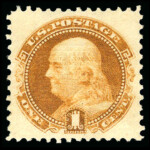
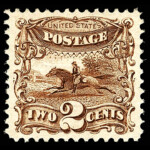
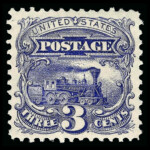
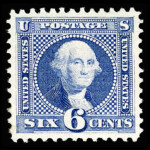
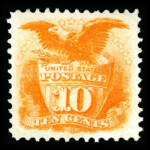

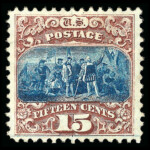
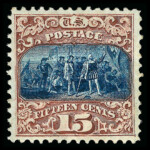

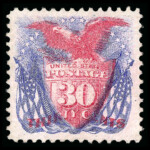













Ask A Question Or Leave A Comment